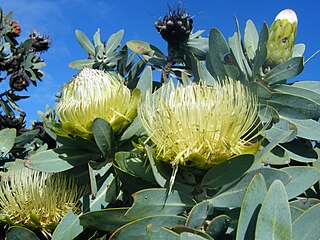
Marengo is a city in McHenry County, Illinois, United States approximately 60 miles west northwest of Chicago. The population was 7,648 as of the 2010 census.

The Battle of Marengo was fought on 14 June 1800 between French forces under the First Consul Napoleon Bonaparte and Austrian forces near the city of Alessandria, in Piedmont, Italy. Near the end of the day, the French overcame Gen. Michael von Melas's surprise attack, driving the Austrians out of Italy and consolidating Napoleon's political position in Paris as First Consul of France in the wake of his coup d’état the previous November.

Afromarengo is a genus of jumping spiders that was first described by S. P. Benjamin in 2004. The name is derived from "Africa" and the genus Marengo. The genus Indomarengo is similarly named.
Indomarengo is a genus of the spider family Salticidae.
Marengo is a genus of Asian jumping spiders that was first described by George and Elizabeth Peckham in 1892. The name is derived from Marengo, a village in Italy and the name of Napoleon's horse.
Rarahu is a genus of jumping spiders endemic to Samoa. As of 2017, it contains only one species, Rarahu nitida. Berland probably adapted the genus name Rarahu from Pierre Loti's book of the same name, which was published in 1880. Loti himself either used the rare Tahitian word "rarahu", meaning "to eat tapu things", or changed the name of the volcano "Raraku". The species name is from Latin nitida "shining", "handsome", or "neat".

Protea nitida, commonly called wagon tree, waboom or blousuikerbos, is a large, slow-growing Protea endemic to South Africa. It is one of the few Protea species that grows into trees, and the only one that has usable timber.

Rattota is a town in Sri Lanka, located within Matale District, Central Province. The population of the town, according to the 2012 census, was 1,761.

Cenarrhenes is a monytypic genus in the family Proteaceae containing the single species Cenarrhenes nitida, known as the Port Arthur plum or native plum. Cenarrhenes nitida is an evergreen shrub to small tree endemic to the rainforests and scrublands of western Tasmania. It bears white flowers in late spring followed by the development of fleshy fruit.
Marengo crassipes, is a species of spider of the genus Marengo. It is native to India and Sri Lanka.
Marengo inornata, is a species of spider of the genus Marengo. It is endemic to Sri Lanka.
Marengo rattotensis is a species of spider of the genus Marengo. It is endemic to Sri Lanka. The species was first discovered from Rattota area of Matale District, hence the specific name.
Marengo striatipes, is a species of spider of the genus Marengo. It is endemic to Sri Lanka.

Hakea nitida, commonly called the frog hakea or shining hakea, is a shrub of the family Proteaceae and is endemic to an area in the southern Wheatbelt, Great Southern and Goldfields-Esperance regions of Western Australia.
Psyllo is a genus of Central African orb-weaver spiders containing the single species, Psyllo nitida. It was first described by Tamerlan Thorell in 1899, and has only been found in Cameroon and the Democratic Republic of the Congo.
Mastira is a genus of spiders in the family Thomisidae. It was first described in 1891 by Thorell. As of 2017, it contains 10 species.

The wych elm cultivar Ulmus glabra 'Nitida' [:'shining', an allusion to the smooth upper surface of the leaves], the smooth glossy-leaved wych, was described by Fries from specimens collected by P. C. Afzelius in 1841 on the island of Stora Karlsö, Sweden, as Ulmus montana nitida, in Novitiae Florae Suecicae: continuatio, sistens Mantissam III: 20 (1842). The Novitiae Florae Gotlandicae (1844) confirmed U. montana f. nitidaFr. as present on the islands of Stora Karlsö and neighbouring Lilla Karlsö off Gotland, Sweden, but did not report it from Gotland proper. A Stora Karlsö specimen from the Herbarium E. Fries is preserved in the Botanical Museum of Uppsala. The tree was listed by Rehder as U. glabraHuds. f. nitida (1915), a designation adopted by Krüssmann (1984), the latter copying Rehder's 'Norway' provenance error.







